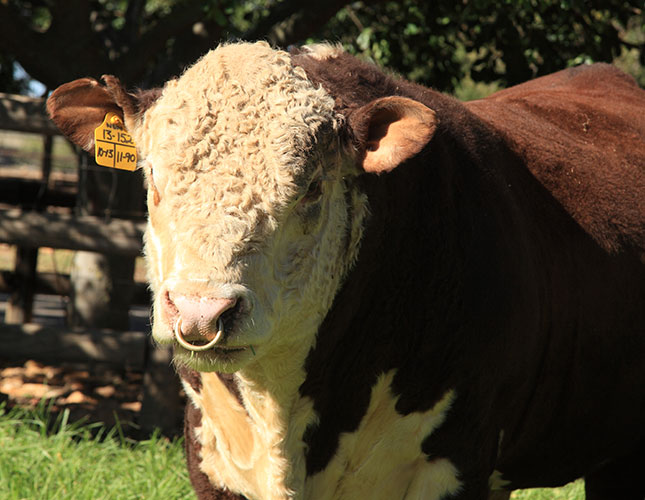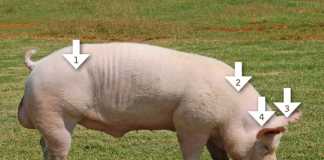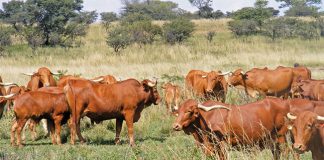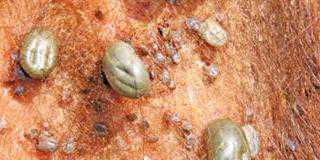
If you are new to cattle, buy good quality young cows that have calved at least once to reduce the possible calving problems associated with heifers. If you buy open (non-pregnant) heifers, put them to a bull that has the trait for easy calving.
Managing a cow-calf herd
As a cattle producer, your main concern is profit. In a cow-calf herd, profit is expressed by the percentage of calf crop (the number of calves weaned per hundred cows mated). The weaning weight of the calves, the cost of maintaining breeding animals, and the sale price of the calves are also important.
READ Twinning in cattle: super-fertile cows
As your enterprise depends on the fitness of the breeding cattle, you should maintain good herd health by not allowing the animals to become too fat or too thin. Bulls that are not in top condition may perform poorly during the breeding season.
Cows that are overweight or underweight will not produce enough milk and may have calving problems. (We’ll discuss body score conditioning in beef cattle at a later stage.)
Breeding season
A controlled breeding season gives better results than allowing the bull to run with the cows all the time. A breeding season of one to two months is usually recommended. This short calving season produces a uniform set of calves to sell at market time. Calves of similar breeding and size tend to bring in more money.
Another advantage is that you can concentrate all your work with calving cows into a short time span, instead of doing it over months.
Cows have a 283-day gestation period. Select breeding dates so that all cows calve at the time of year that suits you. Your decision should also be influenced by weather conditions and whether you can provide feed resources that match the cows’ needs.
Choosing a good bull
A quality bull is essential for maintaining a good, healthy herd. A ratio of one bull to 25 cows is generally recommended, although this will depend on the bull’s age and health and the amount of forage available.
A small herd owner can obtain a good quality bull in one of two ways:
- Buy it in co-operation with another cattleman;
- Lease it from a neighbour. However, this can increases the risk of disease entering your herd.
Another breeding option is artificial insemination (AI), but this will require the help of a vet.
Get a vet to test cows to determine if they are in-calf. This will show which cows should be culled from the herd, avoiding the cost of carrying a cow that is not in-calf through winter.
Calving
This aspect of beef cattle farming requires skill and experience. Contact your vet or extension officer for advice.
You can add value to your calves by feeding them well, vaccinating and dehorning them, castrating the bull calves, and properly marking all calves for positive identification.
Learn how to castrate, dehorn, mark and vaccinate calves under the supervision of an experienced cattleman or vet.
Performance recording: a must for herd health
Keep reliable records at all times. This will enable you to cull poor performers and maintain good herd health and vigour. Such records should include birth date and weight, weaning weight and average daily gain.
Source: nda.agric.za.












